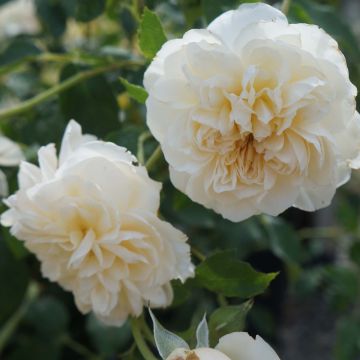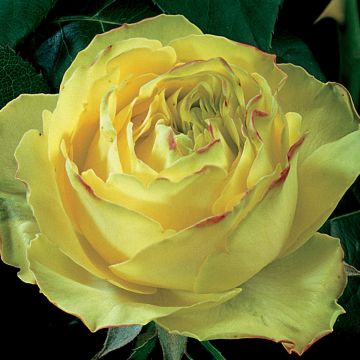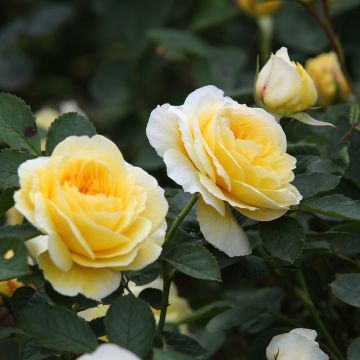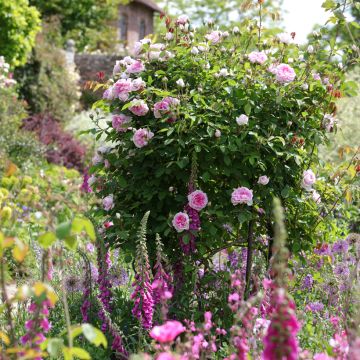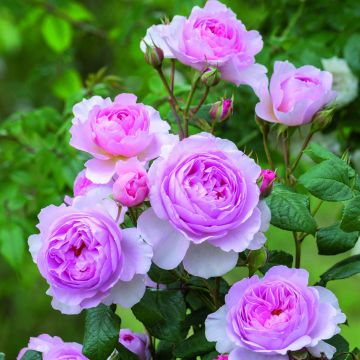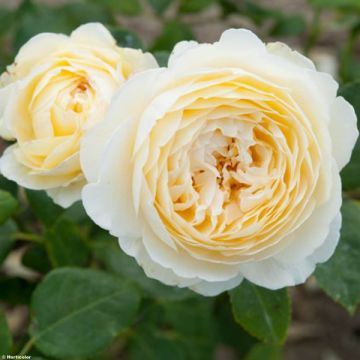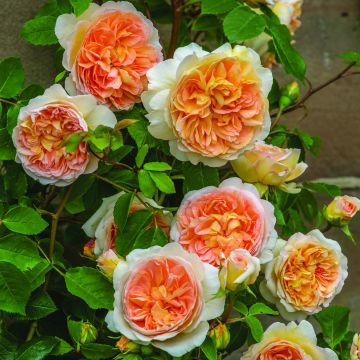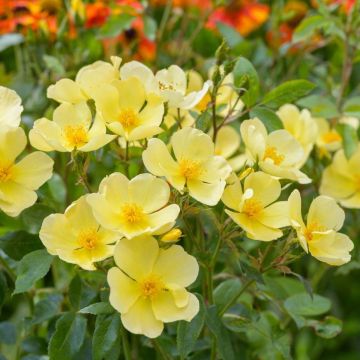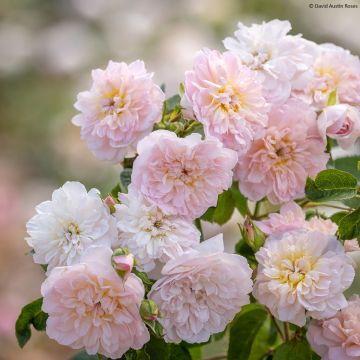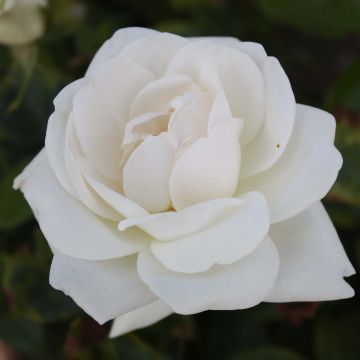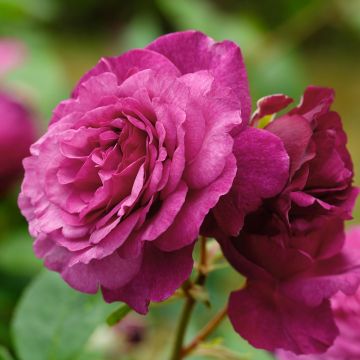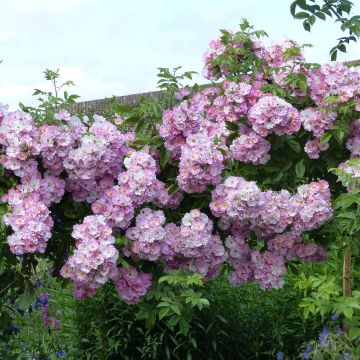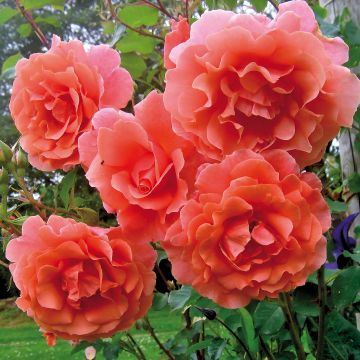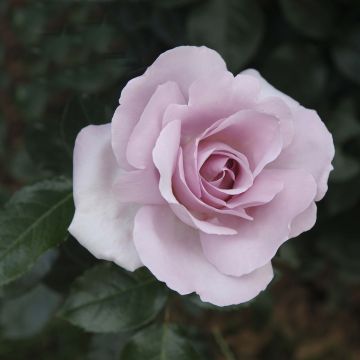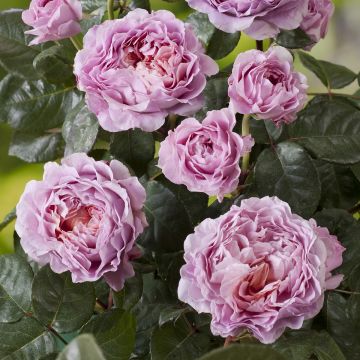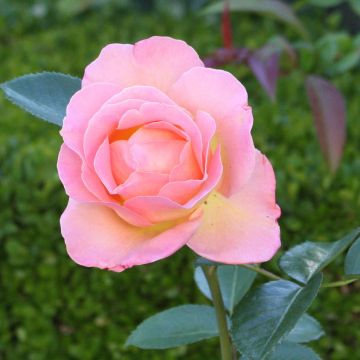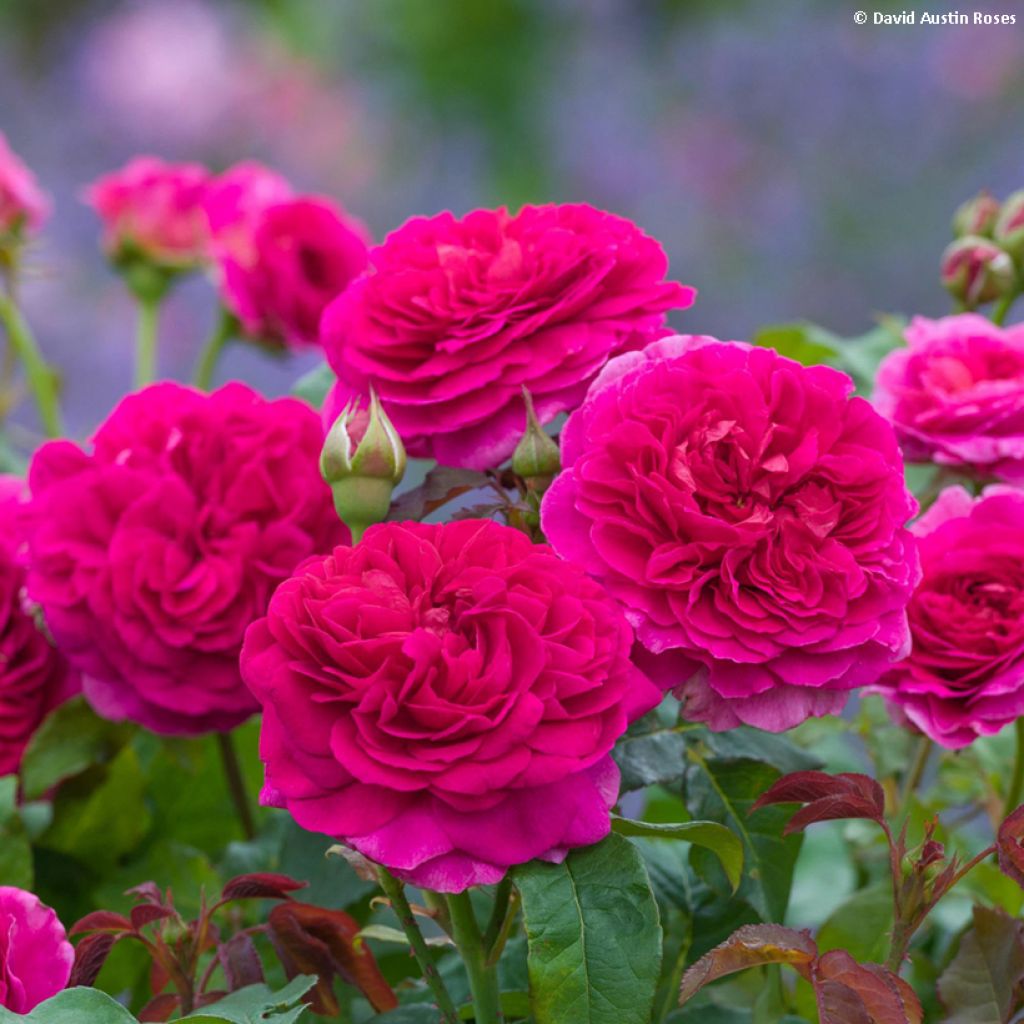

Rosier anglais David Austin Gabriel Oak
Rosa Gabriel Oak
Rosa Gabriel Oak 'Auscrowd'
Rose [Gabriel Oak]
Why not try an alternative variety in stock?
View all →This plant carries a 24 months recovery warranty
More information
We guarantee the quality of our plants for a full growing cycle, and will replace at our expense any plant that fails to recover under normal climatic and planting conditions.
From €5.90 for pickup delivery and €6.90 for home delivery
Express home delivery from €8.90.
From €5.90 for pickup delivery and €6.90 for home delivery
Express home delivery from €8.90.
Delivery to Corse prohibited: UE law prohibits the import of this plant from mainland France to Corse as part of the fight against Xylella fastidiosa. Please accept our sincere apologies.
More information
Does this plant fit my garden?
Set up your Plantfit profile →
Description
Rosa Gabriel Oak (named after the shepherd in Thomas Hardy's novel, 'Far from the Madding Crowd') is a beautiful, opulent, and resistant bush, adorned with a flowering as richly coloured as it is fragrant. Its large flat roses, filled with petals of a striking dark pink, fade at the edges. Their beauty is accompanied by an intense fruity fragrance. They bloom in successive waves from June to October, on beautifully healthy foliage. This magnificent rose bush gives an overall impression of wealth and abundance. It is excellent in borders and hedges, and its flowers are exceptional in bouquets.
Rosa Gabriel Oak is a creation of the famous English rose breeder David Austin. This variety combines charm with excellent disease resistance. It forms a large bush with a rounded, curved, and ample habit, measuring about 1.3m (4ft) in all directions. Its growth is rapid and vigorous, and its graceful stems are covered with lush, dark green foliage that is disease-resistant. The young shoots are coloured reddish-purple, then coppery, and the young floral stems are often purple. The deciduous foliage falls in autumn. The beautiful buds gradually open to form a shallow cup, unfolding into a rosette full of petals that are divided into quarters. The colour of the roses is a deep pink with a touch of violet, fading at the edges over time. The flowering takes the form of clusters of 3 to 5 flowers. Their powerful fragrance of old roses reveals fruity notes. It will be more noticeable in calm and warm weather.
Rosa Gabriel Oak is perfect for embellishing romantic spots in the garden, accompanied by blue, white, or even mauve flowers. Pair it with annual delphiniums, perennial geraniums, or white foxgloves, for example. It will add a floral touch to perennial borders, and will thrive in a large shrub border or even a small flowering hedge. It will be enhanced by a flame clematis with its cloud-like flowering. Roses go perfectly with catmints, campanulas, paniculate baby's breath, and herbaceous or climbing clematis. You can plant them in front of taller shrubs or roses, or use them to fill the base of a small tree that they will adorn with charm.
Obtained by David Austin in 2019.
Report an error about the product description
Rosa Gabriel Oak in pictures
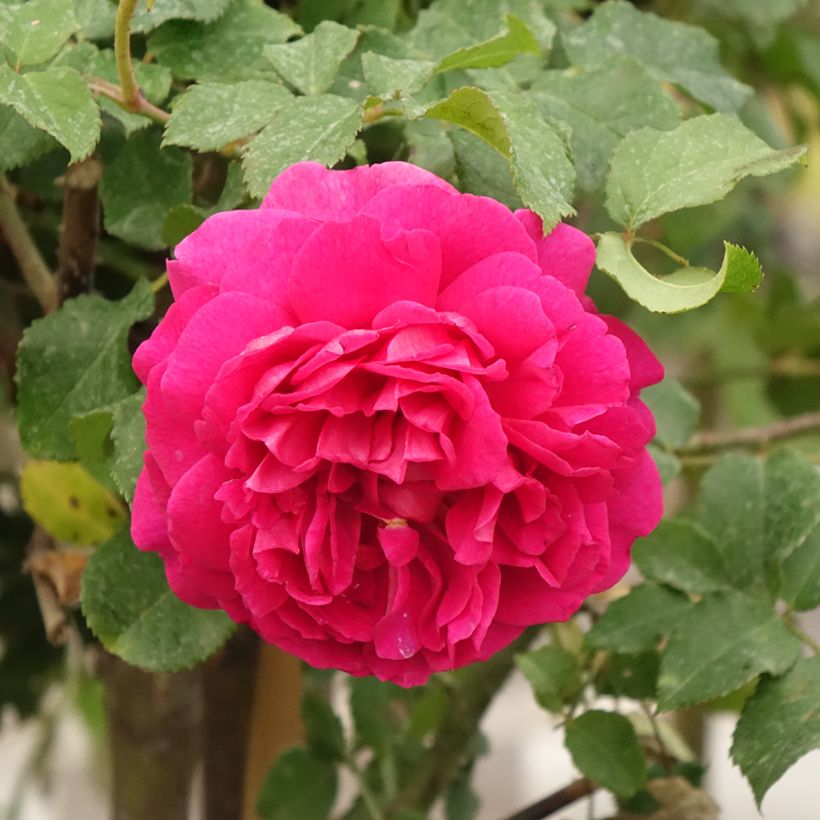

Plant habit
Flowering
Foliage
Botanical data
Rosa
Gabriel Oak 'Auscrowd'
Rosaceae
Rose [Gabriel Oak]
Cultivar or hybrid
Other David Austin Roses
Planting and care
Plant in a sunny location. English roses are tolerant, but do not like excessive limestone. They will adapt to any garden as long as the soil is well worked, not too heavy, and sufficiently rich. To plant your rose, work the soil by crumbling it and add fertiliser to the bottom of the planting hole (dried blood or dehydrated horn, for example). Water generously after planting to remove any air pockets. Water regularly for a few weeks to facilitate root growth. Provide your rose with special rose fertiliser that stimulates flowering.
Pruning English roses is essential for flowering. Shorten the branches to two or three buds above the ground in spring, choosing an outward-facing bud for a more elegant habit. Remove dead wood and unsightly branches. Pruning should be done at an angle above a bud.
Regularly remove faded flowers to encourage new blooms.
Planting period
Intended location
Care
-
, onOrder confirmed
Reply from on Promesse de fleurs
Fragrant Roses
Haven't found what you were looking for?
Hardiness is the lowest winter temperature a plant can endure without suffering serious damage or even dying. However, hardiness is affected by location (a sheltered area, such as a patio), protection (winter cover) and soil type (hardiness is improved by well-drained soil).

Photo Sharing Terms & Conditions
In order to encourage gardeners to interact and share their experiences, Promesse de fleurs offers various media enabling content to be uploaded onto its Site - in particular via the ‘Photo sharing’ module.
The User agrees to refrain from:
- Posting any content that is illegal, prejudicial, insulting, racist, inciteful to hatred, revisionist, contrary to public decency, that infringes on privacy or on the privacy rights of third parties, in particular the publicity rights of persons and goods, intellectual property rights, or the right to privacy.
- Submitting content on behalf of a third party;
- Impersonate the identity of a third party and/or publish any personal information about a third party;
In general, the User undertakes to refrain from any unethical behaviour.
All Content (in particular text, comments, files, images, photos, videos, creative works, etc.), which may be subject to property or intellectual property rights, image or other private rights, shall remain the property of the User, subject to the limited rights granted by the terms of the licence granted by Promesse de fleurs as stated below. Users are at liberty to publish or not to publish such Content on the Site, notably via the ‘Photo Sharing’ facility, and accept that this Content shall be made public and freely accessible, notably on the Internet.
Users further acknowledge, undertake to have ,and guarantee that they hold all necessary rights and permissions to publish such material on the Site, in particular with regard to the legislation in force pertaining to any privacy, property, intellectual property, image, or contractual rights, or rights of any other nature. By publishing such Content on the Site, Users acknowledge accepting full liability as publishers of the Content within the meaning of the law, and grant Promesse de fleurs, free of charge, an inclusive, worldwide licence for the said Content for the entire duration of its publication, including all reproduction, representation, up/downloading, displaying, performing, transmission, and storage rights.
Users also grant permission for their name to be linked to the Content and accept that this link may not always be made available.
By engaging in posting material, Users consent to their Content becoming automatically accessible on the Internet, in particular on other sites and/or blogs and/or web pages of the Promesse de fleurs site, including in particular social pages and the Promesse de fleurs catalogue.
Users may secure the removal of entrusted content free of charge by issuing a simple request via our contact form.
The flowering period indicated on our website applies to countries and regions located in USDA zone 8 (France, the United Kingdom, Ireland, the Netherlands, etc.)
It will vary according to where you live:
- In zones 9 to 10 (Italy, Spain, Greece, etc.), flowering will occur about 2 to 4 weeks earlier.
- In zones 6 to 7 (Germany, Poland, Slovenia, and lower mountainous regions), flowering will be delayed by 2 to 3 weeks.
- In zone 5 (Central Europe, Scandinavia), blooming will be delayed by 3 to 5 weeks.
In temperate climates, pruning of spring-flowering shrubs (forsythia, spireas, etc.) should be done just after flowering.
Pruning of summer-flowering shrubs (Indian Lilac, Perovskia, etc.) can be done in winter or spring.
In cold regions as well as with frost-sensitive plants, avoid pruning too early when severe frosts may still occur.
The planting period indicated on our website applies to countries and regions located in USDA zone 8 (France, United Kingdom, Ireland, Netherlands).
It will vary according to where you live:
- In Mediterranean zones (Marseille, Madrid, Milan, etc.), autumn and winter are the best planting periods.
- In continental zones (Strasbourg, Munich, Vienna, etc.), delay planting by 2 to 3 weeks in spring and bring it forward by 2 to 4 weeks in autumn.
- In mountainous regions (the Alps, Pyrenees, Carpathians, etc.), it is best to plant in late spring (May-June) or late summer (August-September).
The harvesting period indicated on our website applies to countries and regions in USDA zone 8 (France, England, Ireland, the Netherlands).
In colder areas (Scandinavia, Poland, Austria...) fruit and vegetable harvests are likely to be delayed by 3-4 weeks.
In warmer areas (Italy, Spain, Greece, etc.), harvesting will probably take place earlier, depending on weather conditions.
The sowing periods indicated on our website apply to countries and regions within USDA Zone 8 (France, UK, Ireland, Netherlands).
In colder areas (Scandinavia, Poland, Austria...), delay any outdoor sowing by 3-4 weeks, or sow under glass.
In warmer climes (Italy, Spain, Greece, etc.), bring outdoor sowing forward by a few weeks.





































